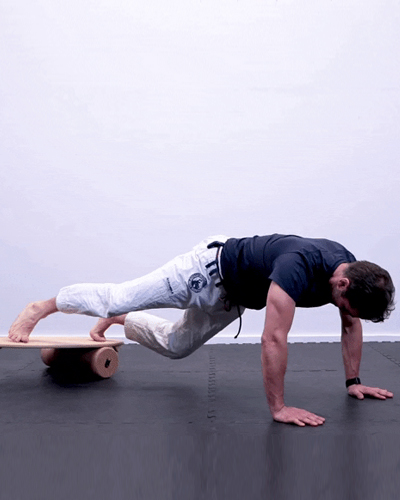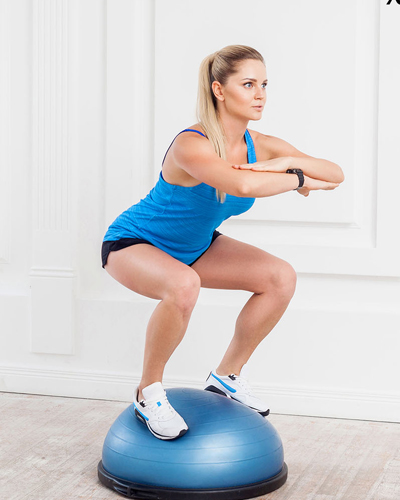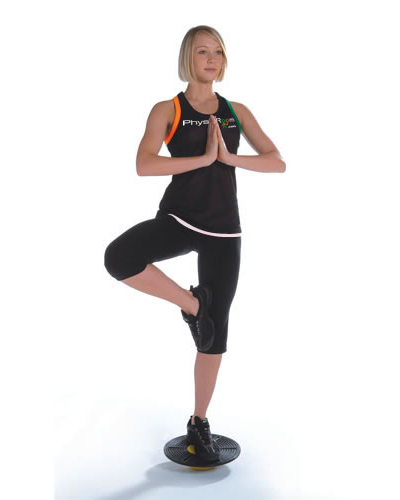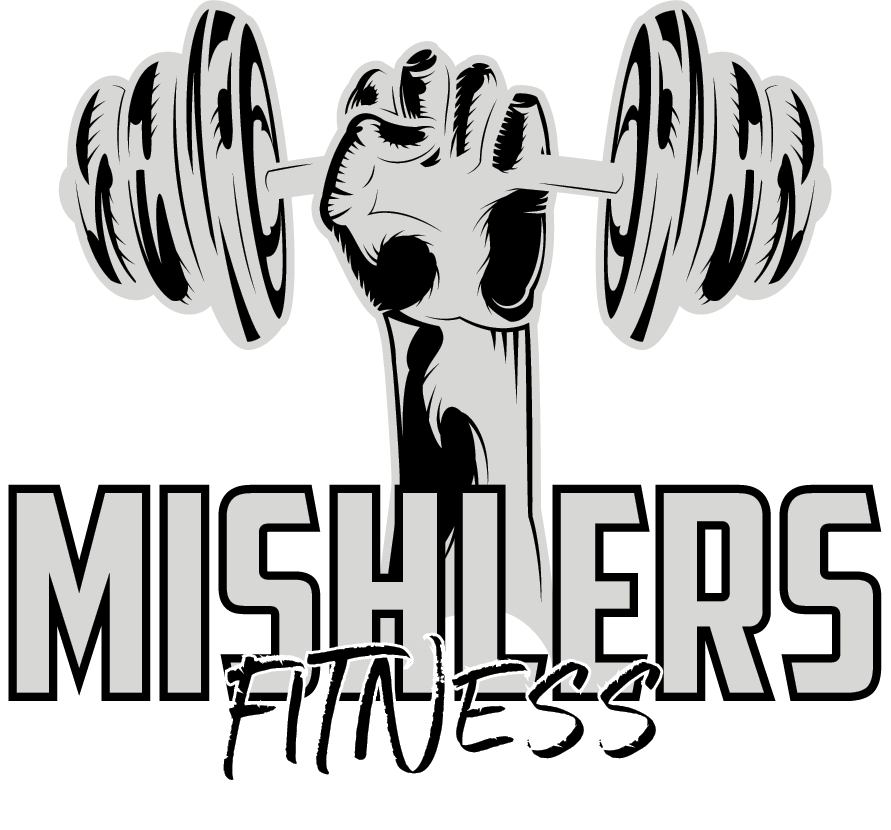Everyone knows that it is important to work out to stay healthy. Sometimes it can be boring to do the same routine week after week. This could cause you to fall out of your routine and start to lose all the progress you have been working towards. Balance board training can be a new challenge for you to take up. You might think that trying to stay balanced on unstable surfaces, like half of an exercise ball, is a waste of time. It actually can have many health benefits and it is a fun challenge to see how your balance has improved over time. Today, we’re going to give you everything you need to know about balance board training and how you can get started to regain your balance.
Who is Balance Board Training For?
Having strong balance is important for everyone. You might have seen this training done by physical therapists to help patients recover from injuries. Doing balance training can help to prevent injuries and develop body awareness. This can be great for athletes when they are competing as well as older people to make sure that their balance doesn’t deteriorate and lessen the possibility of a fall. It really is great for anyone to improve their balance and is easy to put into your workout routine as a warmup or cool down.
The Health Benefits of Balance Training
Balance training is a very effective form of training. It might be hard to believe to some people because most of the surfaces we walk on are quite stable. Even if you’re highly unlikely to run across an unstable surface in your day-to-day life, it has many health benefits besides just improving your balance.
If you’re someone who is prone to spraining or tweaking their ankle, balance training can be a really good idea for you to add into your workout routine. It will reduce your injury risk and will help you spring back faster to get back to your normal routine. Balancing on a balance board requires you to tighten your core to stay upright. Tightening your core will strengthen your core muscles that can be used to help you lift weights. Having a strong core can help you to alleviate lower back pain and solve muscle imbalance. To be able to have these benefits from balance training, you’re going to need to be consistent. You could possibly see improvements in one to two weeks, but it is training that is for life.
Equipment for Balance Board Training
To be able to get the health benefits from balance board training, you’re going to need the right equipment. Here are some different pieces equipment you can use to start your balance board training today:
Roller Board Balance Trainer

You can stand on this board or use it in a plank position. The wooden board is covered in a layer of non-slip grip tape on top to help keep you stable while you’re trying to balance. The roller goes underneath the board to make the board unbalanced. It naturally adheres to the bottom of the board as you are trying to keep your balance. To get on the board, place the board centred on the roller. The board should be angled diagonally. The easiest way to step on is to step on the side that is down with one foot. Once you find a comfortable position for your base foot, step the other foot on the higher end and find your balance to do your exercises.
Balance Board

This board is shaped in a circle with a sphere on the bottom to balance on it. It has an anti-skid surface and a strong grip to help you to strengthen your lower back, core, and increase balance and coordination. You can safely get on it by having the board diagonally angled. Step on with one foot on the side that is on the ground. Then step the other foot on the other side and balance yourself out.
Balance Trainer Stability Half Ball

This piece of equipment is like half of an exercise ball. You can easily stand on the ball side or you can use the ball side down for a flat surface to hold planks. You can just step on it and get to work on your balance training to build your core and balance.
How to Work out on a Balance Board
After you pick which piece of equipment you want to use for your balance training, it’s time to do some exercises to get the core and balance you’ve always wanted. Here are some exercises for balance board training:
Wide Leg Plank

Facing your balance board (if you are using a half ball, use it with the ball side down), place hands on the board with your arms straight. When your hands are balanced, get into a plank position. Hold for 30 seconds and then rest. Repeat those four times. As you get confident, you can try it out by using one leg in the air or move between your hands and forearms while being on the board.
Squat and Hold

Stand on the board (or half ball) with your feet hip width apart. Lower yourself down into a squat position and hold for a few seconds. Slowly, rise back up. Complete this in three sets of ten repetitions with one minute rest in between.
Tricep Dips

You have seen these with normal benches, but it is time to up the challenge a little bit. Face away from your board (or half ball). Place your hands behind you on the board with the fingers facing towards you. Keep your feet about hip width apart and flat on the ground. Slowly lower your body and bring yourself back up. Complete this in three sets of ten repetitions with one minute rest in between.
Single Leg Balance

Stand on the board (or half ball) with your feet in the center. Slowly lift one leg off. When lifting your leg, it is not about how high you can get off the ground. Try to aim for a 45-degree angle. Aim for 30 seconds to a minute on each leg for four rounds or hold it for as long as it is comfortable.
Wrap Up
These were just a few exercises you can try, but there are so many more that you can try out. If you feel any pain, make sure that you stop the exercise and note where it was painful. Contact a professional trainer to find balance exercises that align with your body and goals. It’s time to regain balance in your life!




